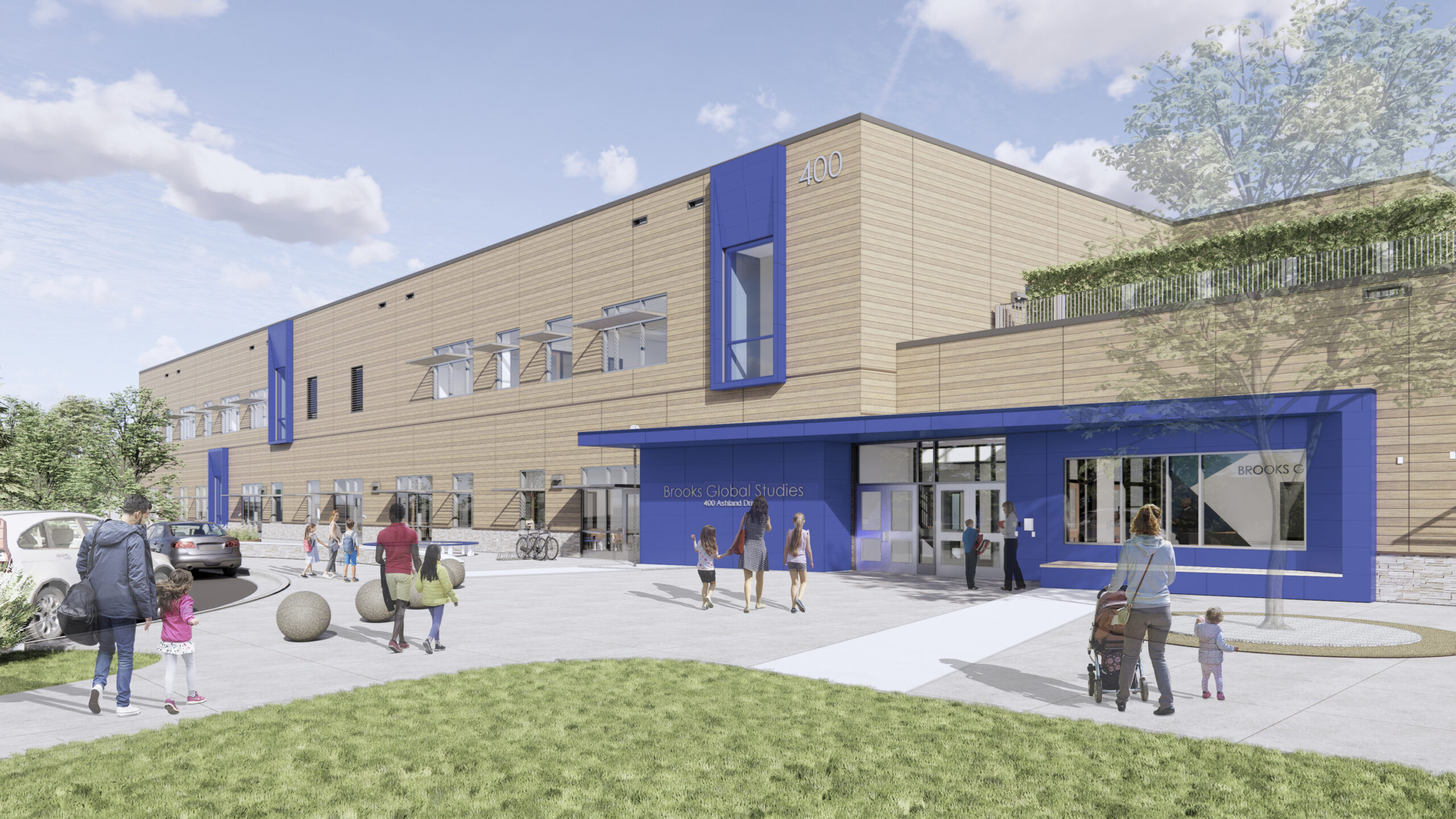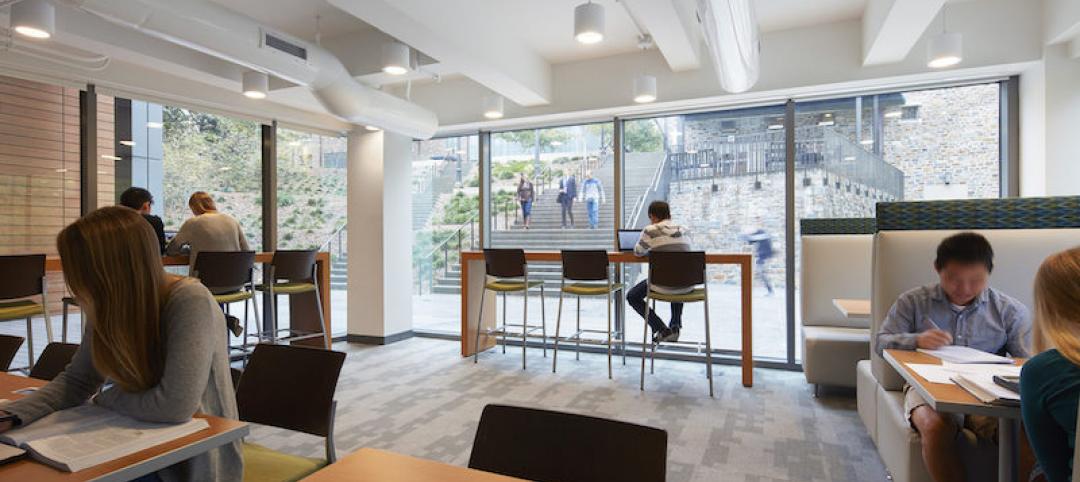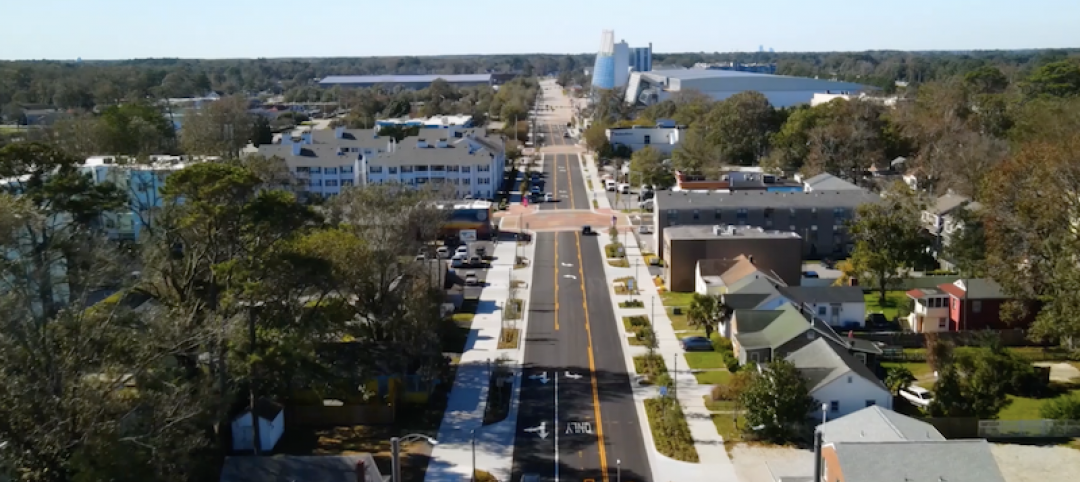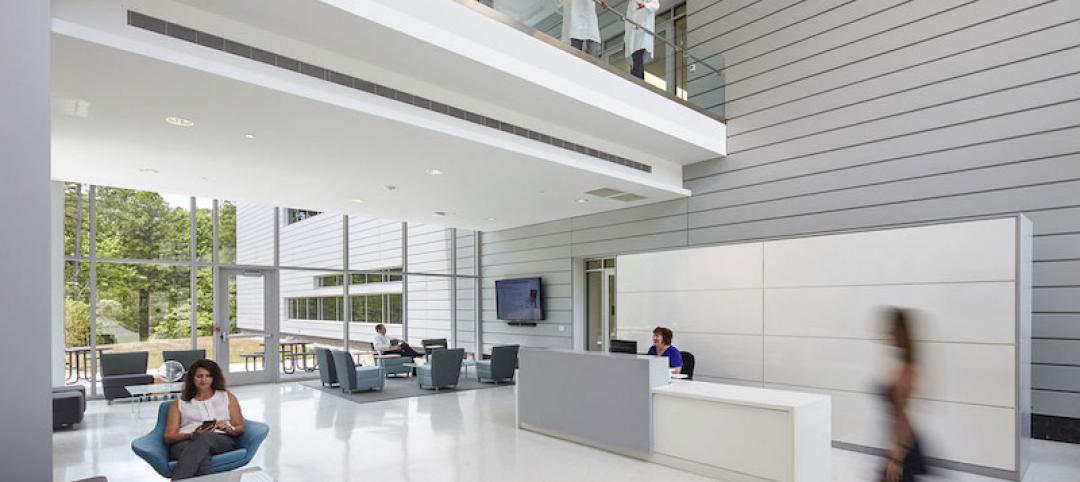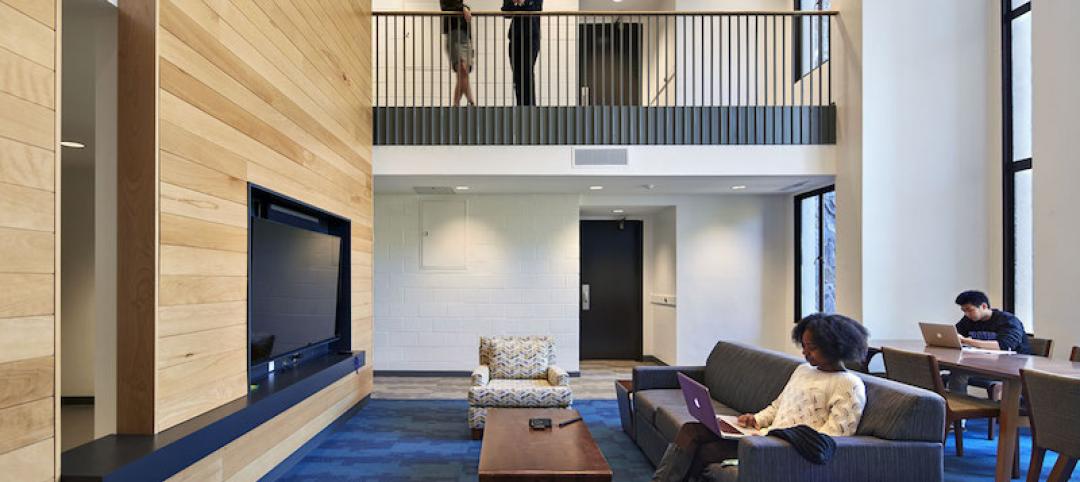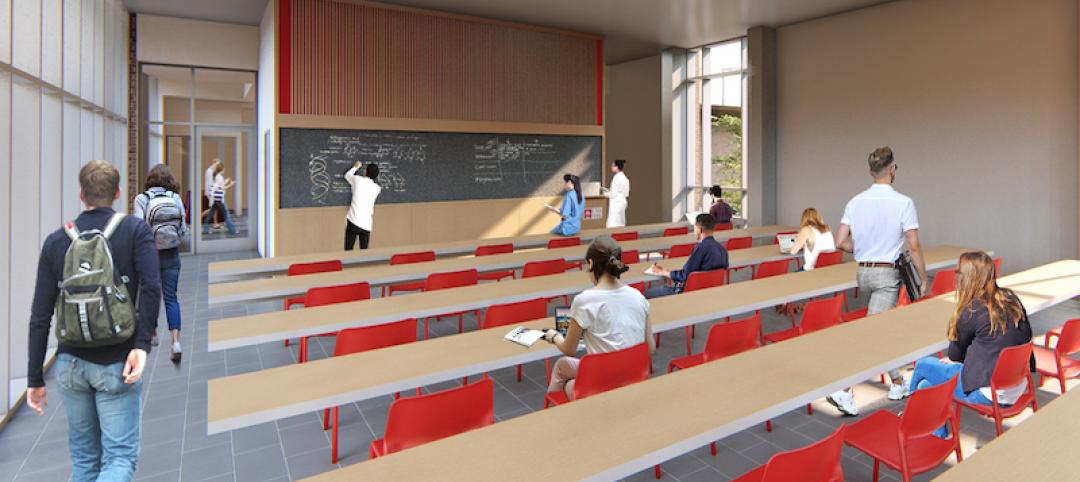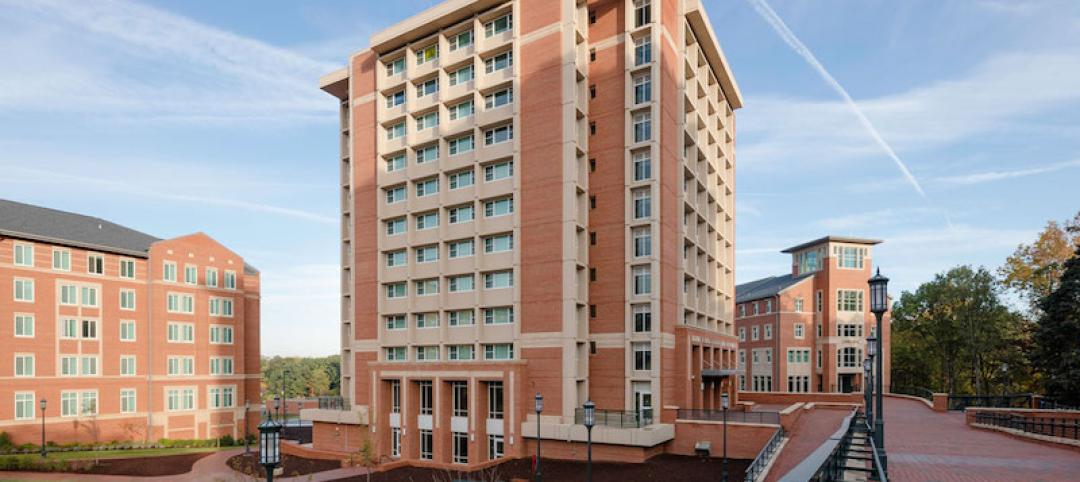Magnet schools emerged on the K-12 scene as early as the 1960s to establish a public education option that met multiple goals: Attracting a diverse student body from across a school district, supporting students with specific interests, and offering equitable opportunities resulting in high levels of academic success. Today, over 4,300 K-12 magnet schools educate more than 3.5 million students nationwide, according to Magnet Schools of America.
Many of today's magnet schools focus on STEM or arts themes, with a rigorous academic approach intended to engage students and prepare them for real-world challenges. This instructional method necessitates a different building design response to meet teacher and student needs effectively.
Design Strategies for K-12 Magnet Schools
1. Feature flexible, engaging learning environments
Magnet school buildings must support the unique nuances of their programs, providing opportunities for the theme to thrive and attract students from across the school district. The program must be relevant, engaging, and flexible enough to grow.
Not only do classrooms need to be flexible in their configuration and function (instructional technology, for example), but the entire building must be an adaptable center of learning where students can work anywhere with access to instructional tools and materials. This takes shape through extended learning areas such as collaborative spaces, commons, or the creative use of wide corridors—providing spaces for both planned and impromptu learning.
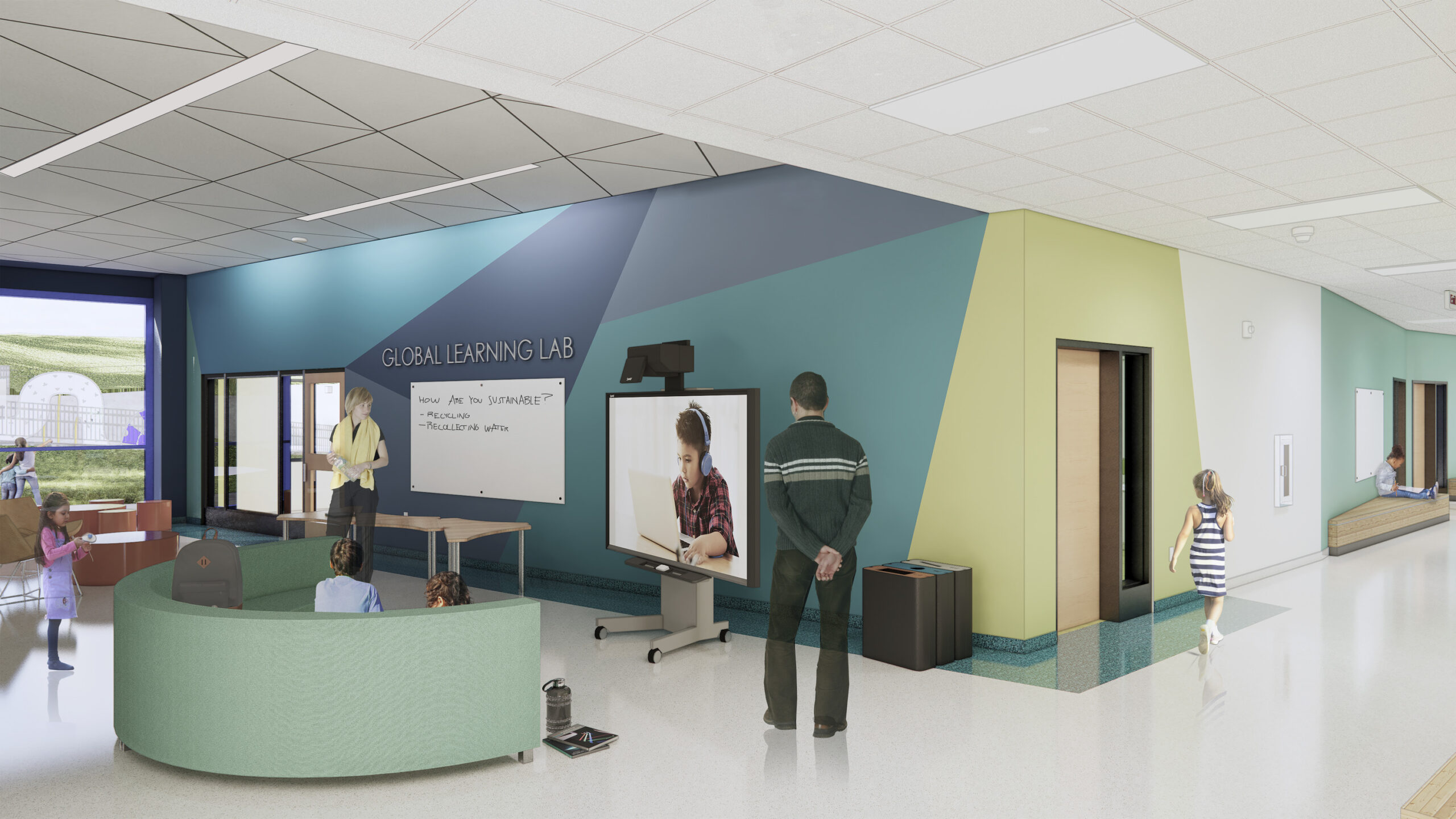
The magnet theme for Brooks Global Studies in Greensboro, N.C., is global studies. The school's design creates safe places for students to research and ask the big questions that inspire big ideas. Various space types and open, collaborative environments support the mission to explore current and future global challenges and celebrate cultural differences.
2. Emphasize maker space and extra storage
Many magnet themes have a heightened focus on project-based and inquiry-based learning, meaning that exploratory spaces and storage are especially important. The types of projects and assignments students are faced with require more long-term and dedicated spaces that are readily available. Mini-maker spaces dedicated to a grade level can complement a larger maker space that houses more equipment and is accessible to the entire student body. These mini-maker spaces can be utilized in magnet programs to promote exploration and discovery through every class and subject.
3. Design to prioritize student-led learning and individual learning styles
Student-led learning is a central tenet of magnet school education, with the teacher as a facilitator. Many of these educators have advanced certifications to support instructional delivery of the magnet school theme, and the environment must facilitate an inspiring student experience. Magnet school instruction is also cross-disciplinary, allowing students to look at educational materials from many different viewpoints.

"At Conn Magnet Elementary, students in K-1 participate in each of the dance, drama, music, and art programs before they choose their focus areas in later years," said Gabriel Chidester, Principal of Conn Magnet Elementary School in Raleigh, N.C. "Students in grades 2-5 can share what they are interested in before signing up for focus area courses."
4. Design for community
Many of the above best practices in design cross over from magnet schools to traditional K-12 schools, although magnet schools have a heightened emphasis on certain elements. In contrast to magnet schools, which draw students from across a large district, the traditional public school is a neighborhood focal point, with base school populations established from the surrounding neighborhoods. Traditional public schools benefit from an inherent sense of community, while designers must strive to strengthen that sense of community in a magnet school on two fronts: a welcoming environment for students and teachers and a school that integrates with the neighborhood in which it is located.
For example, the school should be open to meeting community needs in times of crisis (such as providing food or shelter during weather or public health-related events) or everyday needs for underserved populations, such as a food pantry, clothing closet, or health services. These schools can also support and enhance local assets, as Brooks Global Studies does by integrating shared parking and outdoor amenities for the adjacent Greensboro Arboretum. At Conn Elementary School, the site was developed to enhance neighborhood walkability and offer play spaces and outdoor amenities for neighborhood use after school hours.
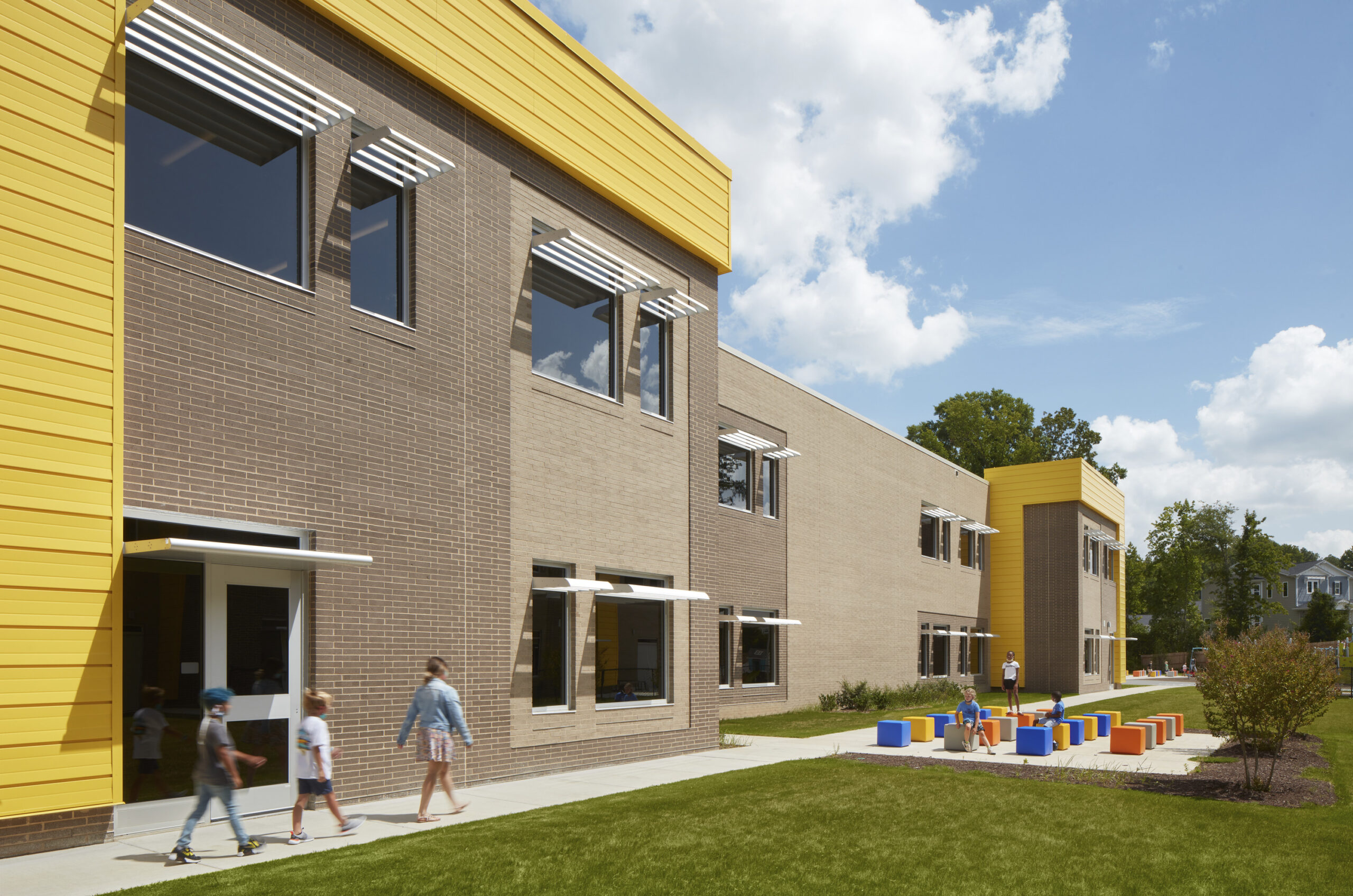
Design elements can also enhance the magnet school theme to provide meaning to students and the outside community. For example, there is an emphasis on the performing arts at the Ligon Gifted and Talented/AIG Basics Magnet Middle School in Raleigh, NC. At the heart of the existing school is a 900-seat auditorium and stage, much larger than what is typically planned for new middle schools. A two-story lobby on the public face of the building announces the auditorium, and the performing arts theme, as the façade of the lobby boasts multi-colored glass representing a computer-generated pattern found in the Beatles song "Across the Universe."
Community engagement during the design process is critical to integrating features that will benefit the surrounding community. Where existing magnet schools are being updated or replaced, the designers must understand the story and values of the existing school community. Offering all stakeholders (including students, staff, district personnel, and community neighbors) the chance to provide input enables the design team to understand common values, informing the guiding principles for the new design.
Design priorities can be established from this open, transparent discussion and drive a new facility that honors the values and history of the existing program while elevating the experience for future students.
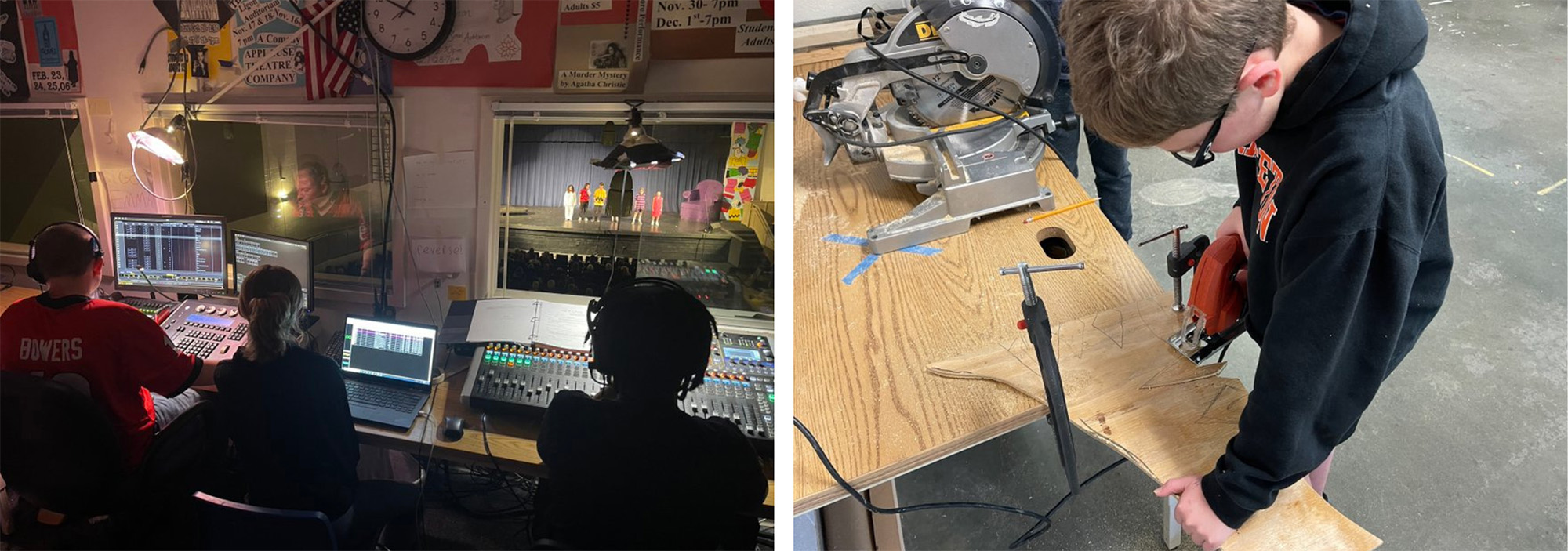
"Community support is a key component to student success," said Chidester. "During the building planning stages, we listened to the input and suggestions of the community regarding school accessibility, safe routes to school, and design layout. As a result, Conn Magnet Elementary has secure access points for entry, features universal playgrounds on campus, and has a large open field for play and exercise, all of which are very important to the community."
Magnet and traditional K-12 schools each offer unique attributes to their student bodies. They can deliver an exceptional education—the design of each school should respond to provide the optimal learning environment.
More from Author
Clark Nexsen | Apr 25, 2024
How pools can positively affect communities
Clark Nexsen senior architects Jennifer Heintz and Dorothea Schulz discuss how pools can create jobs, break down barriers, and create opportunities within communities.
Clark Nexsen | May 17, 2023
Designing K-12 schools for students and safety
While bullying, mental health, and other acts of violence are all too common in schools today, designers have shown that smart and subtle preventive steps can make a big difference. Clark Nexsen’s Becky Brady shares how prevention and taking action at the design level can create safe and engaging learning environments.
Clark Nexsen | Jul 1, 2022
How to apply WELL for better design outcomes
The International WELL Building Institute (IWBI) cites attracting top talent, increasing productivity, and improving environmental, social or governance (ESG) performance as key outcomes of leveraging tools like their WELL Building Standard to develop healthier environments.
Clark Nexsen | Jun 3, 2021
What's next for workplace design?
Balancing personal space and the need for collaboration.
Clark Nexsen | Apr 1, 2021
The changing face of freshman and sophomore student housing
As part of a surge in new housing projects for freshman and sophomores, we are seeing increasing demand for double occupancy rooms and suite-style arrangements in both new construction and renovation projects.
Clark Nexsen | Feb 17, 2021
Best practices for streetscape design that cultivates community
Well-designed streetscapes provide a wealth of benefits for their respective communities.
Clark Nexsen | Oct 20, 2020
Best practices in S+T office design
Within the constraints of the typical COVID-19 office protocols, lab users face the additional challenge of working with hands-on processes, tight schedules, and shared resources.
Clark Nexsen | Aug 3, 2020
5 reasons universities are renovating student housing
Clark Nexsen’s Student Life practice leader, Peter Aranyi, discusses the benefits of renovation and why it offers particular value to campuses nationwide.
Clark Nexsen | Jun 2, 2020
COVID-19 and teaching the next generation of nurses
COVID-19 hasn’t just upended healthcare delivery, the workplace, and all levels of education – the economic toll is still being realized – and capital projects on college and university campuses will inevitably be impacted as public and privately funded projects adjust to the budget crunch.
Clark Nexsen | Apr 13, 2020
The role of higher education housing in fighting COVID-19
Distance learning, remote work, and the need for emergency medical facilities may forever change the way these spaces are designed and used – and a new emphasis on serving the community, regardless of primary function, has emerged.

